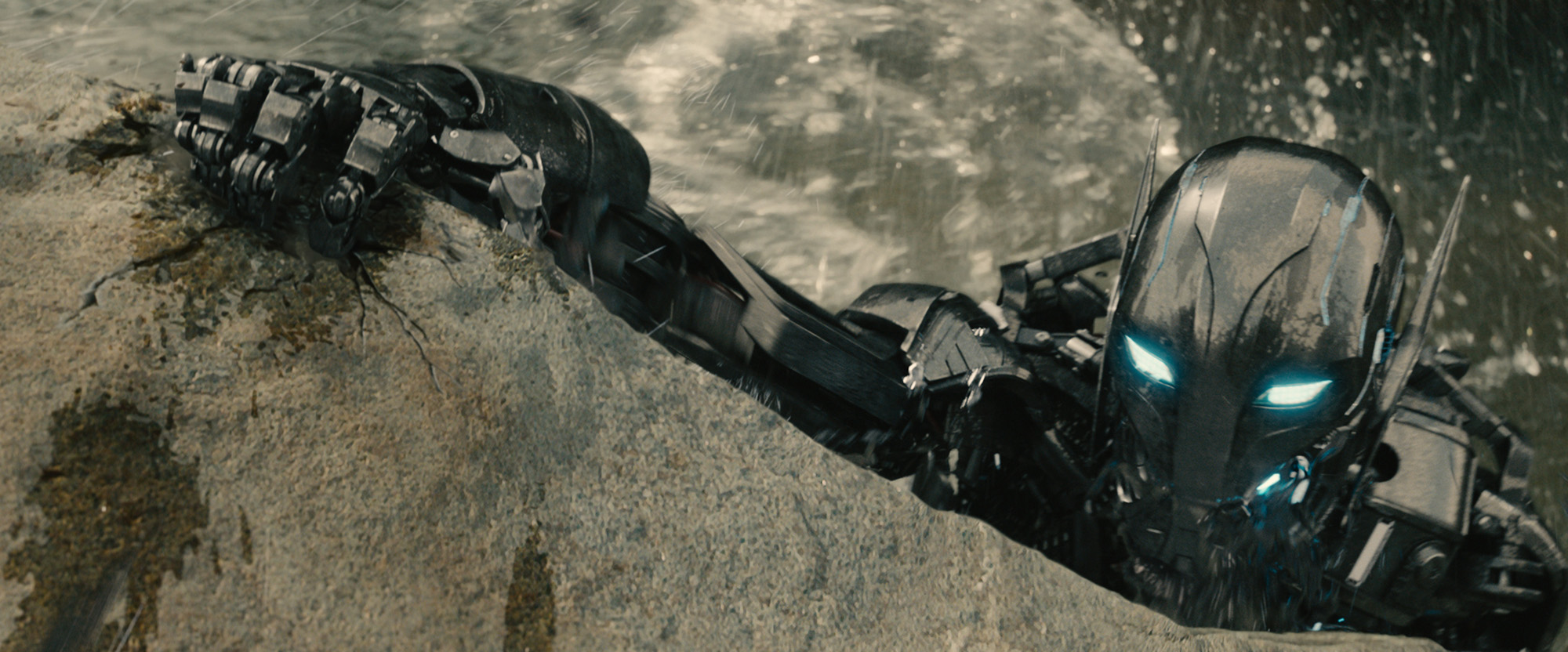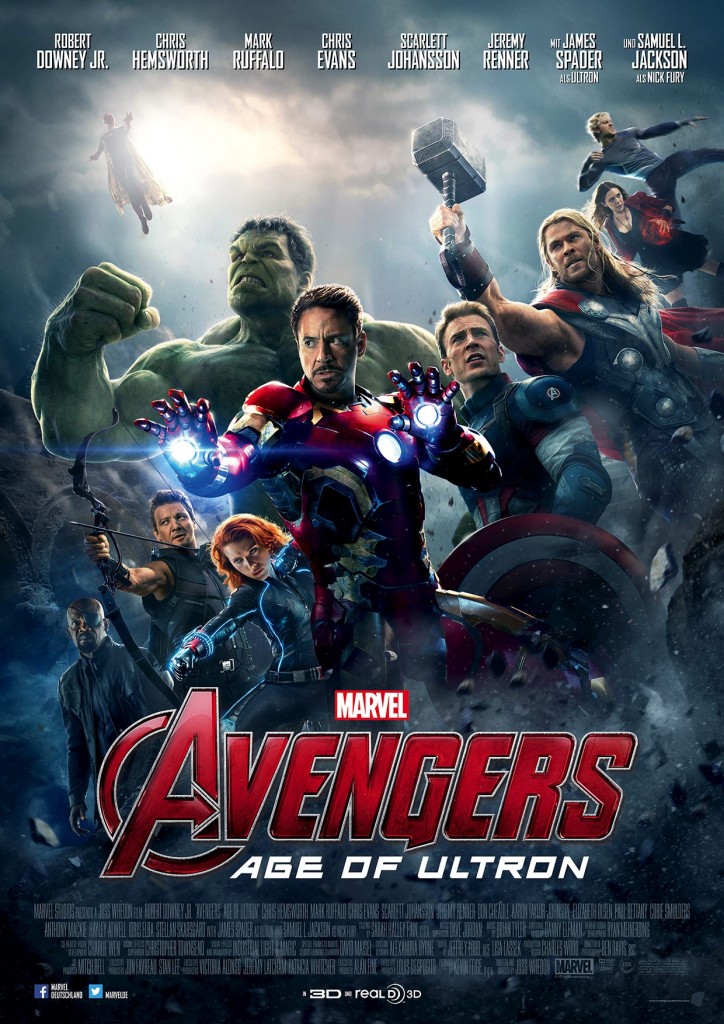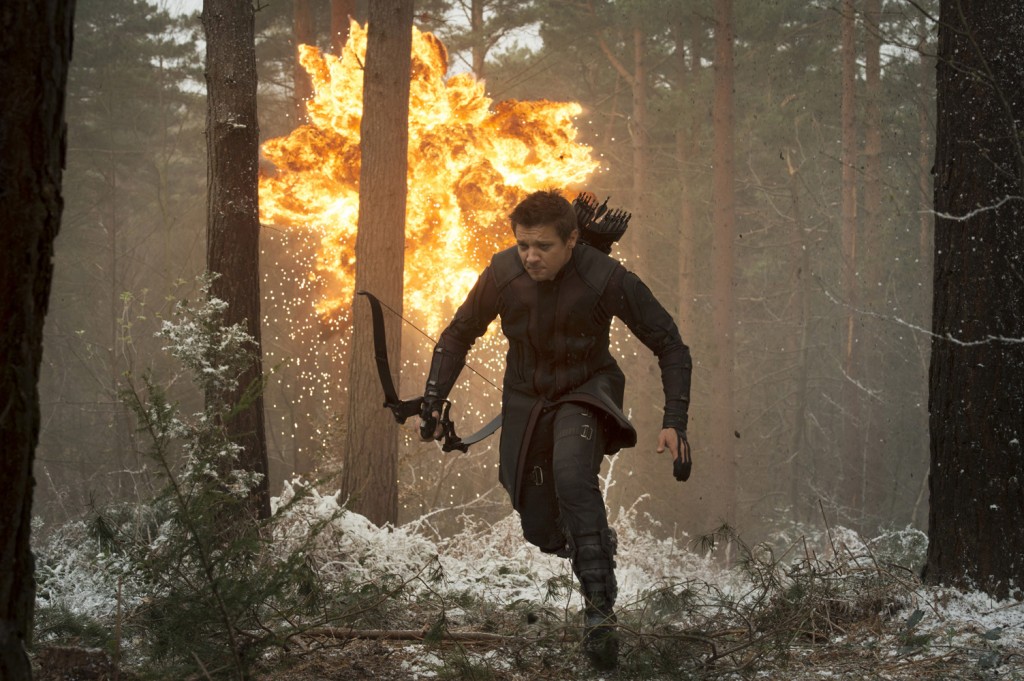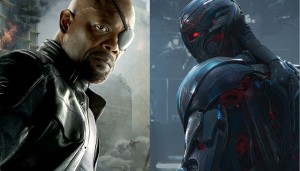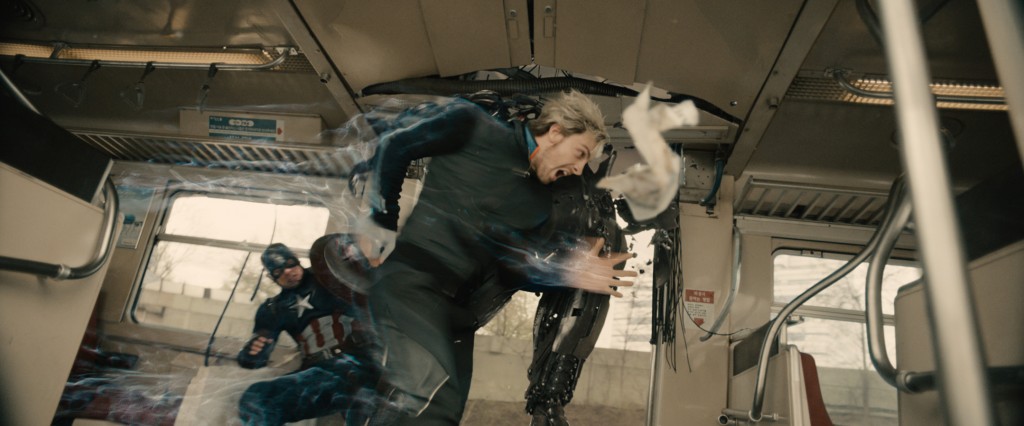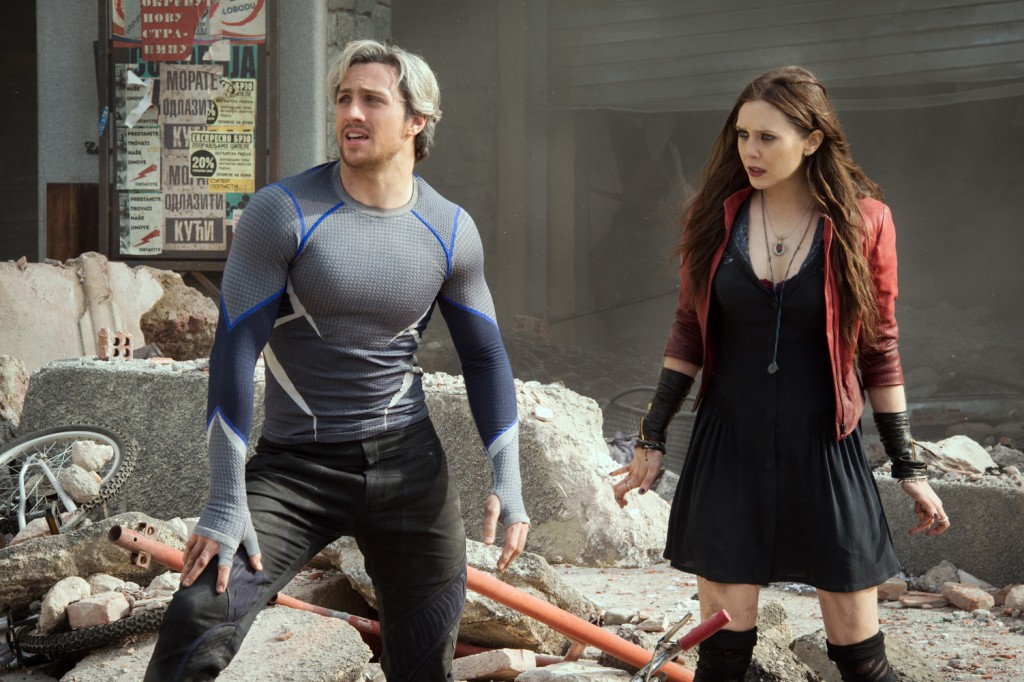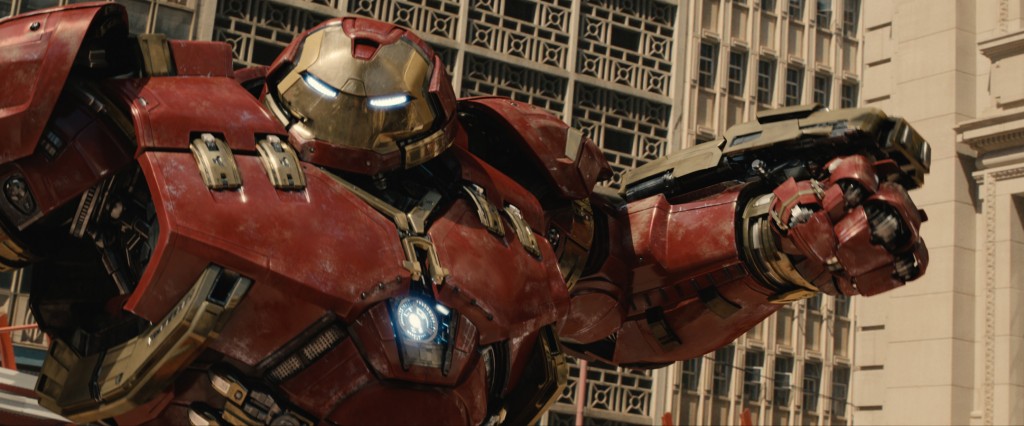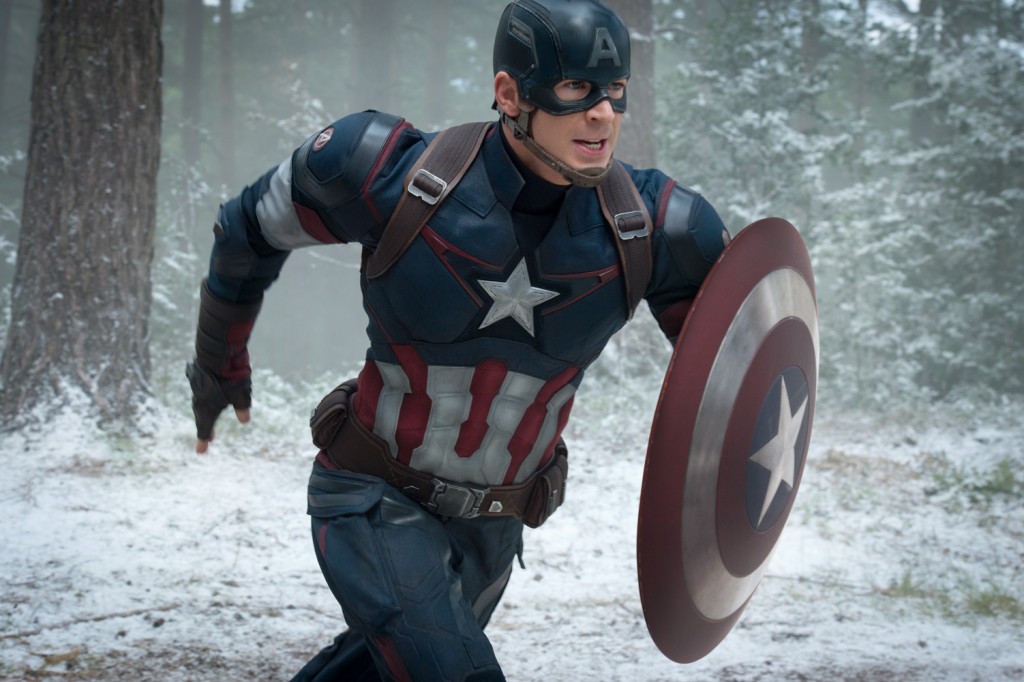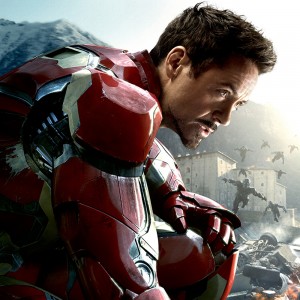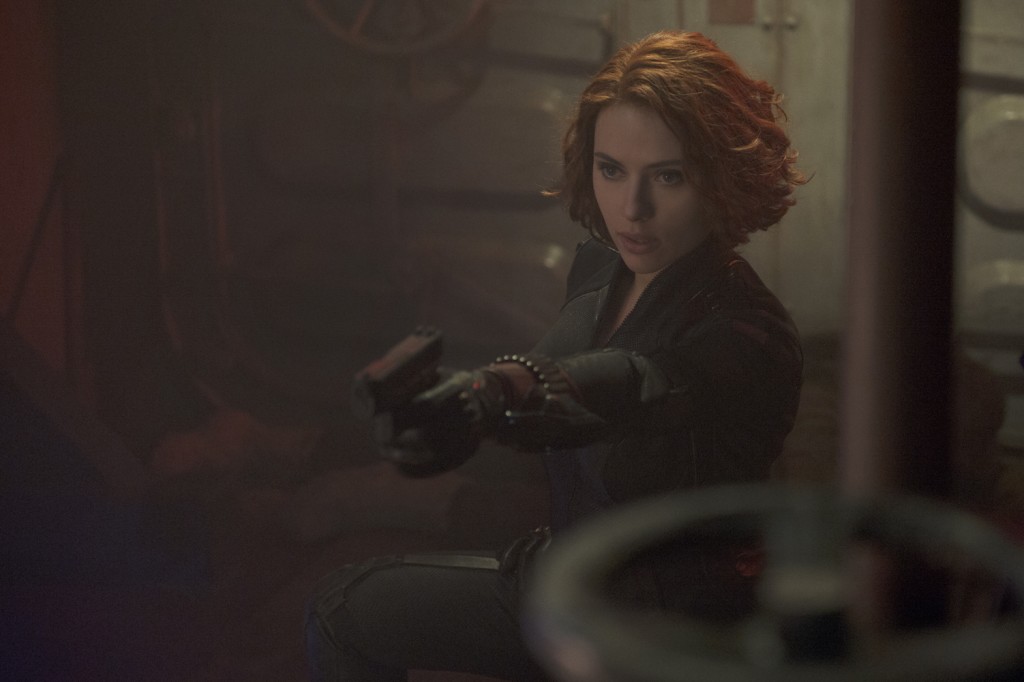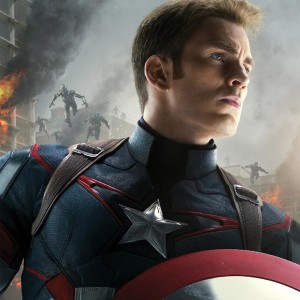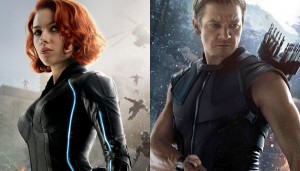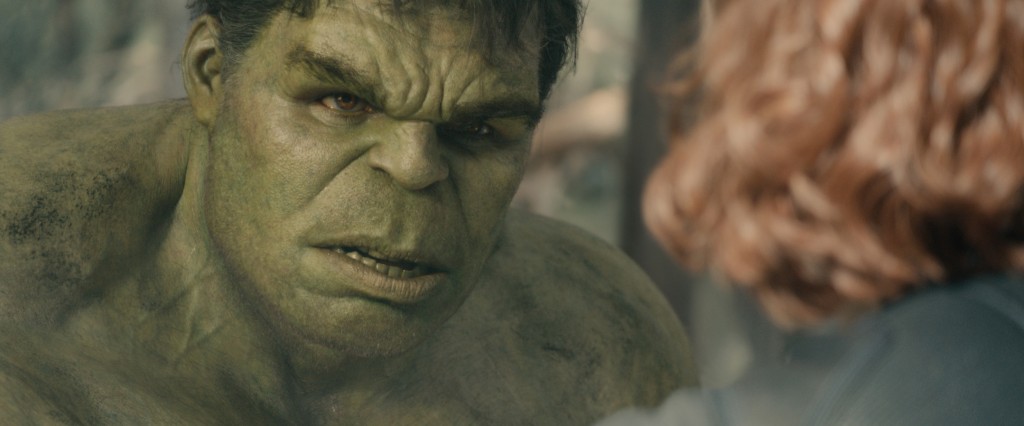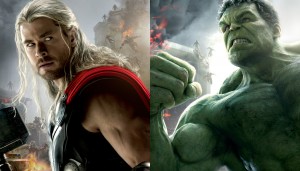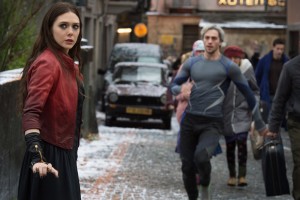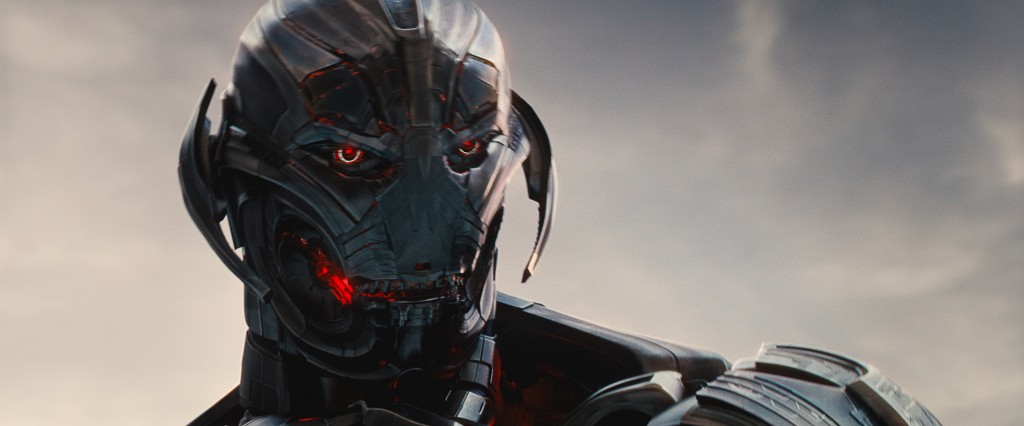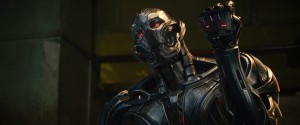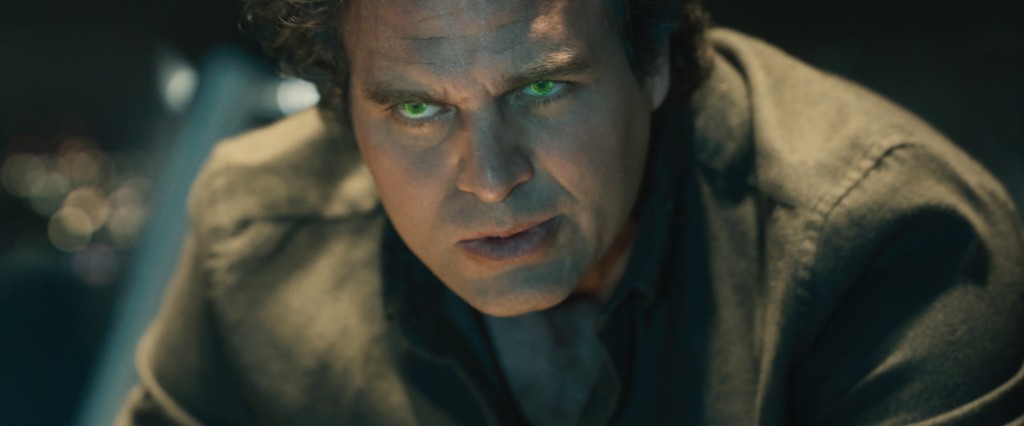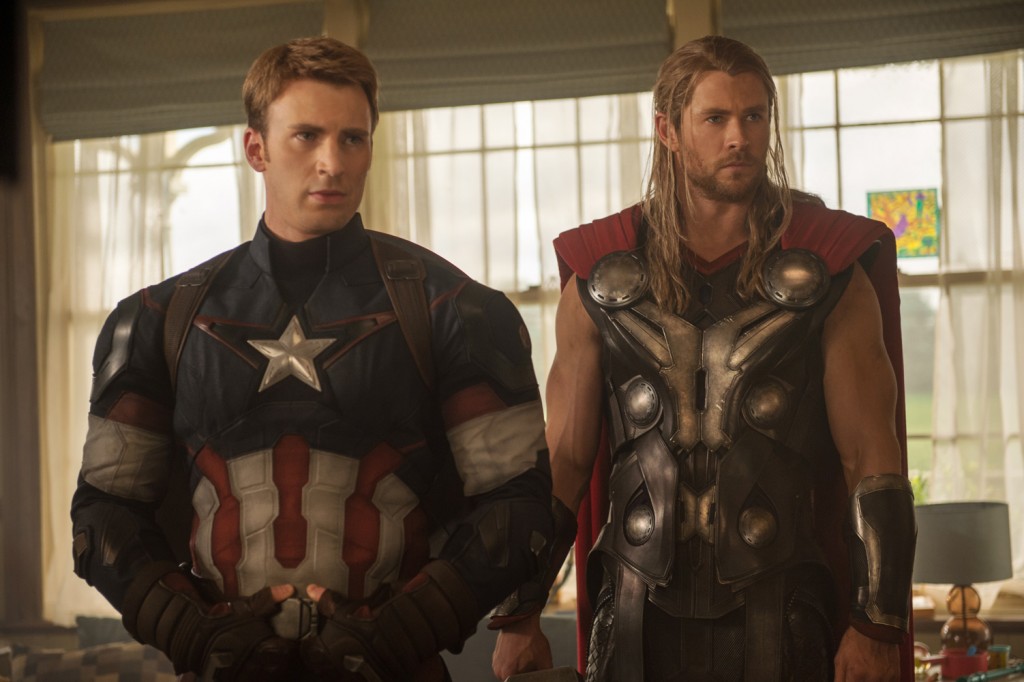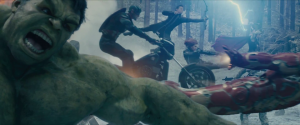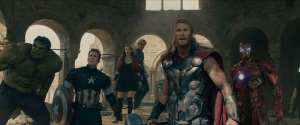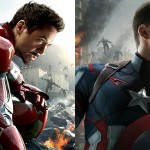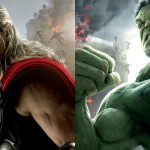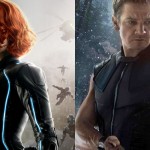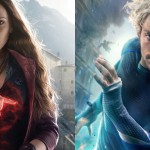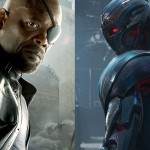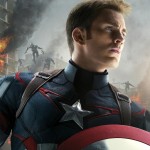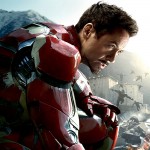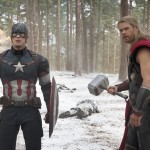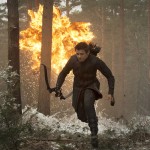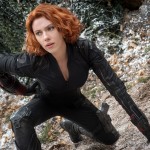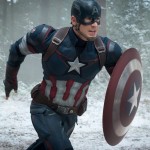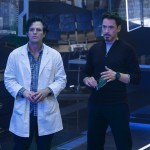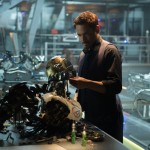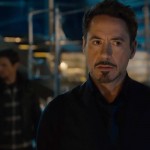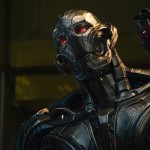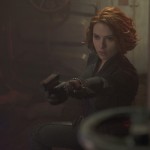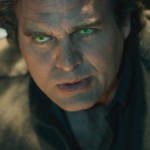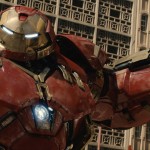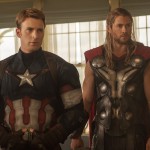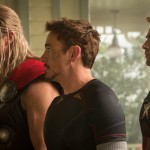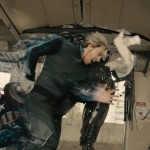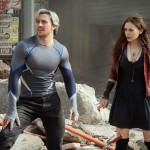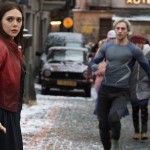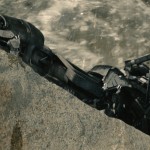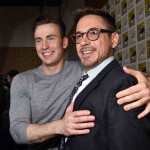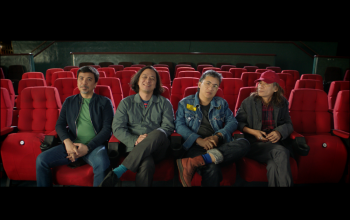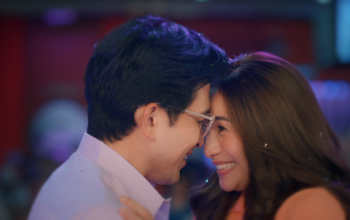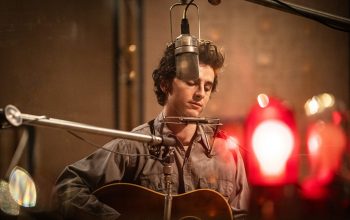Plucking the strings of Avengers, Ultron and the MCU
Avengers: Age of Ultron by the numbers:
- 10 main characters.
- 142 minutes.
- 11th film over-all.
3rd superhero team-up film of the Marvel Cinematic Universe. - 1st of 3 planned sequels to 2012’s The Avengers.
Together with the critical and commercial success of Marvel Studios’ 2014 releases, Captain America: The Winter Soldier, and Guardians of the Galaxy, all eyes are on writer-director Joss Whedon‘s latest labor of love, Avengers: Age of Ultron. Could he do it again for the worldwide movie event of 2015? Will the rich history and wealth of character development in the past ten films be a treasure trove of goodness or a burden of expectations? Will the hype and marketing be enough to rake in the greens when locally, no film distributor dared to release any new film, what with some multiplexes showing just this film across all its theatres? Avengers: Age of Ultron kept us waiting for so long so here are the direct answers to these frequently-asked questions.
Yes, he did it again but…
In typical superhero lore, character development is intertwined with the action and plot because these characters are just being translated from decades of funny pages to two hours for the general public. In superhero team-ups, team dynamics and the organization from a group of individuals are the major focus. In Avengers: Age of Ultron, both areas are discussed, albeit abbreviated, ending with a level of optimism expected for a Marvel Studios film, which may not be as heavily founded considering the gravity of their troubles. We will discuss the intricacies of the story and character development in full detail below and whether the three-act film is adequately primed to draw that kind of conclusion for the Avengers team. First, we gloss over the main reason people watch this blockbuster: the awe and amusement of action.
Scratching the surface
Uninitiated to the who’s who of Avengers? Read here.
The set pieces truly are astounding, exemplifying each hero’s might, skill and personality through quips, running gags and catchphrases that never grow tiresome on repeated use. There is a right temporal balance of technique and pomp except for the understandable reliance of CGI and slow-motion techniques for the skill sets of the new cast members, Scarlet Witch and Quicksilver, respectively. Avengers: Age of Ultron doesn’t hold back with the smart excitement with its introductory and ending action sets gorgeously presenting the Avengers as a team, in cinematic glory. The action sequences punch more power when it molds with the intelligent screenplay as they go one-on-one with each other, whether it be from the Iron Man’s action-figure worthy Hulkbuster suit, or the other hero-versus-hero squabbles too spoiler-y to mention. All these rely on succint execution but the glee emanating from seeing the six-piece band together in the third act of The Avengers cannot be replicated anymore. The comic book movie virgins will appreciate these more; however, if Marvel Studios continues to play their cards this well, the worldwide phenomenon that redefined the look and feel of Hollywood action will be the new common.
The banters, lines and small talk keep the level of entertainment witty with some sort of familiarity with nods to the memorable scenes of The Avengers. The finest humor may require some visceral understanding, as reflected by the noticeable silence from the audience, particularly when expressing Ultron’s atypical millenial personality as with the other menacing movie robots of “evil,” such as the Terminator or HAL-9000. Hawkeye’s conscious recognition of his ridiculous role elicits the most hilarity inside me and I just hope other members of the jam-packed crowd did.
Aside from the abundant light-hearted instances, the form of seriousness we are fed with, emphasizes Whedon’s particular direction for his works. These moments are not defined through powerful speeches or big dramatic strokes, thus concealing the real horrors of Ultron’s color of evil. I, for one, prefer my darkness pitch black, or what the absence of color is. However, in reality, the bleakest corners of the world have either looked too ordinary from apathy, or coated with false hope as our defense mechanism. Such is the criticism to the slew of Hollywood studio films, or specifically, Marvel Studios films as compared with the DC Cinematic Saga. Bathed in positive accord, cinema is treated both by the viewer and filmmaker as escapism, and submission to the strings, instead of being a tool for emancipation, and liberation from learned helplessness. With a post-modern approach, I think this grand purpose has valid bearing but I don’t care as much because I want to see my Wanda Maximoff and Vision in human form; and that is the truth I want to see. (Reviewer’s note: The previous sentence is not fully in tune with what the reviewer truly believes in. He just wants to play the chords of commercialism and his deep fandom for this much-awaited film. Also, in a historical perspective, it’s this balance of humor and visual decadence that has worked since the first film of the Marvel Cinematic Universe.)
This distinct flavor of smart action the writer-director has exercised both in printed illustrations and live action small screen format, is enhanced primarily by the carefully-crafted and detailed functional costumes, and by the symphonic strings-laden score of Brian Tyler and Danny Elfman. The film’s precise editing, together with the diverse kinds of shots employed, of tighter close-ups for dialogue-intensive scenes while a proper mix of wider shots and close-ups to convey the team’s dynamics during missions, mesh pretty well to bring the comic book to life. Comparing this film with The Avengers, it is definitely more resplendent in all aspects indicating the level of attention all departments have delivered in crafting this. Skin-deep, Avengers: Age of Ultron becomes a more marvelous cinematic experience and certainly enough as testosterone fuel. Beyond all the superlatives, the core of balanced visual storytelling is what sets this film apart from blockbusters, as it does not suffocate you; it does not make a joke of your neurons; it does not violate your eyes; and most of all, there is a heart behind the polished armors and kempt hair.
Cutting in
Moviegoers today are not satisfied with the superficial and scrape to the bottom of the film. We now dive into the world Avengers: Age of Ultron has presented, and how it goes with the main story it is presenting.
Avengers goes global.
The linear plot, which is simply stopping Ultron, is able to keep the film grounded as the Avengers explore Wakanda, a fictional African country rich in vibranium, the metal component of Captain America’s shield; South Korea, where they search for Ultron, an experiment on artificial intelligence gone awry; Sokovia, the made-up Eastern European home nation of the enhanced humans Wanda Maximoff/Scarlet Witch and Pietro Maximoff/Quicksilver where the epic skirmishes at both ends of the movie; and the Avengers Tower in New York, where trouble brewed. The specific color motifs and quick establishing shots lend a hand in keeping us well-oriented of the frequent change in setting. The different shades of culture and urbanization’s rise and decay broaden the scope of the Avengers’ area of responsibility away from their American quarters. It also emphasizes the autonomous role of the team outside the direction of Nick Fury, from the Strategic Homeland Intervention, Enforcement and Logistics Division. These two factors weigh more in the next phase of the Marvel Cinematic Universe where they go both cosmic and fundamental, to the stakeholders of the peace they are defending.
A number of supporting actors serve as reference to the characters’ past, immediate future (later in the film) or distant future (a platform for the MCU Phase Three films). These surely incite fangasms, like the Black Panther readers, but they are oriented to not overpower the Avengers’ screen presence. After much rumination, these multiple locations and secondary characters feel less integral to the story, only kept to let the plot go forward, and are intended as a way to prolong and feature more action sequences and terrains, thereby showcasing the global potential of the film as a blockbuster.To prevent boredom from such repetition, these were placed with much class, proper pacing and distinct hues nonetheless.
The supporting cast’s unfortunate disposals are done in typical comic book writing, of being severely injured, or just plain unavailable. Never to be seen again in the movie or in the whole universe unless needed, the Avengers don’t have the same level of connection with these fellows. Cobie Smulders‘ Agent Maria Hill, who by now after four films, should have a more commanding role considering her status as a ranking SHIELD officer. Claudia Kim‘s Dr. Helen Cho, a world-renowned geneticist, may just possibly a plot point on latter films regarding how the Avengers see themselves above international laws. The team’s press releases and charity donations will only go as much in terms of public perception when there is immense destruction brought about by a singular experiment from these self-appointed police. With these developments and the level of appreciation of moviegoers for superhero films, the Zack Snyder film adaptation of Watchmen in 2009 could have had benefited more after the release of Avengers: Age of Ultron.
Robert Downey Jr. feels ‘Age of Ultron’ marks end of era, start of new. Read more.
Given the wide array of supporting cast, there is the absence of Gwyneth Paltrow‘s Pepper Potts, and Natalie Portman‘s Jane Foster, the respective romantic partners of Tony Stark/Iron Man and Thor. This becomes a non-issue in-universe as the premium dialogue of the Whedon style of feminism addresses this by subverting the trophy wife trope. This example, as with the whole party scene of pre-Ultron peace, indicates that he has already some loose formula in letting his characters interact. His confidence in it, with hundreds of scripts prior, will make you wonder when we would get tired of it. His sense of humor is absolutely endearing that even with your eyes closed, his production will still get the attention of the visual viewer.
The main attraction
Captain America commands the ‘Avengers’ in epic sequel. Read more.
The returning cast, Captain America, Iron Man, Thor, Hulk, Black Widow and Hawkeye have fully embodied their respective personalities, thanks to donning their capes and armors for the past years. Charismatic as always, Chris Evans‘ Captain America, the team’s barometer of morality, is able to hold his ground against Robert Downey Jr‘s Tony Stark’s well-intentioned yet questionable position, and liberal actions on holding peace. Their heated discussions could have escalated to greater and more exciting proportions if it was not held temporarily when the film figured out to have eaten more it could chew. Still, the resolution of their issues are deemed too convenient especially when what practically blew over their debate is the fortune of saving the day again with minimal casualties. At that point in the story, some of us would suspect something missing or altered to the point that the happy state of affairs in the end feels a bit false. Fortunately for us, we will revisit their ideologies in riper form and this uneasy feeling of their peace time through the 2016 film, Captain America: Civil War.
Johansson/Black Widow, Renner/Hawkeye back in ‘Avengers 2.’ Read more.
Jeremy Renner‘s Hawkeye is explored more deliberately as we haven’t really been exposed to who Clint Barton, the man holding the bow and arrows is. Remember that he was brainwashed for the two acts of exposition in The Avengers. His connection to the team we have known so far is an ambiguously platonic, or forced romantic relationship with fellow SHIELD agent Natasha Romanoff/Black Widow. It turns out, he is the most relatable from the crew, cuing in from his superpower of being just a regular folk, supplemented by his newly-revealed character background. On a world-building standpoint, it is necessary for he is not a major player in any other film. Without the knowledge of the previous films, Hawkeye, as well as the other core Avengers, could stand their ground and introduce themselves to the neophytes. Whedon’s long history in episodic literature proves to be a boon for the second Avengers film.
Thor, Hulk: God & Monster return in ‘Avengers: Age of Ultron’ Read more.
As heavily publicized in daily geeky news and trailers, the assassin Black Widow is most open with her human Natasha Romanoff side with Bruce Banner, the scientist whose rage transforms him to the green monstrosity, the Hulk. Scarlett Johanssson and Mark Ruffalo‘s chemistry might not be palpable to start a fan club but the actors try their best in presenting their intimacy and need for longing. Furthering this closeness are scenes of their isolation as complemented by extreme long shots, in contrast with their tighter shots when seen together. To be fair, this angle may have been formulated after the casting has been done years ago, and closer to the writing of The Avengers when Bruce Banner truly has showed much interaction with Black Widow, as his then-recruiter. With the absence of a chemistry test, this is the suitable form of superhero love story we could see from Marvel, for now. When I first saw it in the trailers, it was alarming for its possible marketing move to pander to the rom-com audience, and therefore might be too sappy and cheesy. The film proved us wrong with this peek to the other familiar worlds of romance and human connection, reminding us that love is a universal element in every individual.
Read more of the new players in town, Quicksilver and Scarlet Witch
The newcomers, Aaron Taylor-Johnson as Quicksilver and Elizabeth Olsen as Scarlet Witch, impress us with their ability to keep up with the rest of the cast as enhanced humans, except for Olsen’s noticeable momentary loss of her Eastern European accent within and across scenes. How they are employed started quite simplistic and archetypal until the second to third acts where we get to learn more of them as people and not just some superpowered twins. As their first film in the Marvel Cinematic Universe, their origins and human elements could have been probed further rather than a few lines of exposition to cover these and their disdain of certain public figures. The Maximoff twins could also use a scene for sibling bonding to cement their shared misery and to exemplify how Pietro acts as a big brother to his maturing sister Wanda. Their point of transformations to true heroism are still memorable as they are, with Scarlet Witch’s full-witch mode the starting point of unleashing her true potential. The best thing we can make out of them is how they are not just delegated as henchmen or added fluff, making them an essential part of the movie outside of pushing the Avengers to the edge.
Ultron hell-bent on human extinction in ‘Avengers’ sequel. Read more.
Ultron, the lone villain is intriguing and demands to be analyzed and deconstructed on the context of child-rearing, social imprinting of the traits of his inventor, singularity and as juxtaposed with Vision, another creation presented late in the game. They are both visually impressive thanks to CGI from the ever-reliable Industrial Light & Magic, especially Vision, played by Paul Bettany via motion capture, takes the cake for his regal design, elevating his stature with his entry setting the tone to a philosophical level, which we see glimpses of later on. James Spader renders Ultron a memorable villain even if the film doesn’t let us in through more of his insights, which is understandable as he opts to walk the talk. His notion of individuality and superiority complex that led to his fascist tendencies is viscerally more terrifying but even with his vast screentime, these are not translated superbly. Vision plays a foil to Ultron, meriting a thesis on his origins and whether he would descend (or ascend) to Ultron’s line of thinking. These two new characters do spark our metaphysical conversations, though what was covered were not as immersive nor intriguing as Isaac Asimov‘s science fiction short stories or the number of staple dark anime on man, technology and god. Setting aside what isn’t there, the film will surely tickle everyone’s curiosity in dabbling philosophy on a daily basis.
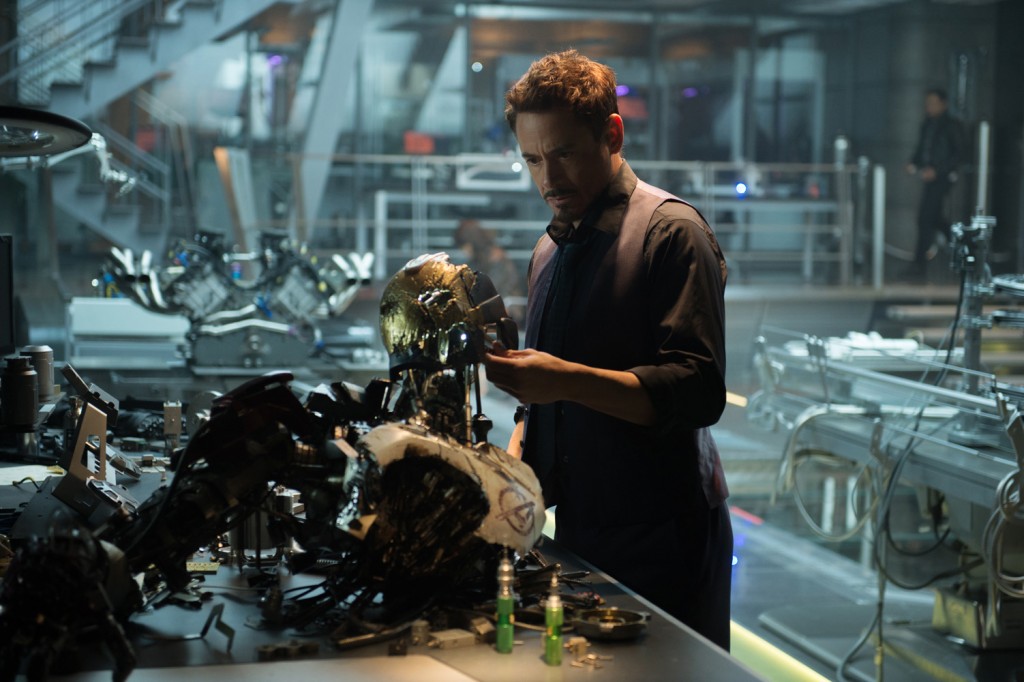 However, amidst the fun and equal time shared by most of the cast, Avengers: Age of Ultron, the glaring flaw that persists in the different story arcs is not that it had too much on its plate but they took less guts to push the running time further to fully present and neatly wrap up all the individual storylines. It was reported that the initial cut was under four hours and even without this information prior to entering the cinema, the experience truly feels redacted. The five narrative directions mentioned above are distinct and structured yet string-thin, particularly in the abrupt denouement that could have made the state of thinness more physiologically acceptable and not borderline-anorexic. Only Hawkeye’s storyline felt complete, as opposed to The Avengers where he was the odd member of the team. Not mentioned above is Chris Hemsworth‘s Thor, who now became a stranger to the pack as his internal fears have been unclear and actions in resolving other characters’ conflicts a deus ex machina. Despite this underwhelming arc, all the six stories are united in displaying the impact of power to both to their own daily lives and the fate of the species they have vowed to protect out of their own volition. These are expressed in familiar human life cycle stages, as a son, as a sibling, as a friend, as a partner, as a citizen, among others. It is this resonance that makes Avengers: Age of Ultron all the more relatable and memorable.
However, amidst the fun and equal time shared by most of the cast, Avengers: Age of Ultron, the glaring flaw that persists in the different story arcs is not that it had too much on its plate but they took less guts to push the running time further to fully present and neatly wrap up all the individual storylines. It was reported that the initial cut was under four hours and even without this information prior to entering the cinema, the experience truly feels redacted. The five narrative directions mentioned above are distinct and structured yet string-thin, particularly in the abrupt denouement that could have made the state of thinness more physiologically acceptable and not borderline-anorexic. Only Hawkeye’s storyline felt complete, as opposed to The Avengers where he was the odd member of the team. Not mentioned above is Chris Hemsworth‘s Thor, who now became a stranger to the pack as his internal fears have been unclear and actions in resolving other characters’ conflicts a deus ex machina. Despite this underwhelming arc, all the six stories are united in displaying the impact of power to both to their own daily lives and the fate of the species they have vowed to protect out of their own volition. These are expressed in familiar human life cycle stages, as a son, as a sibling, as a friend, as a partner, as a citizen, among others. It is this resonance that makes Avengers: Age of Ultron all the more relatable and memorable.
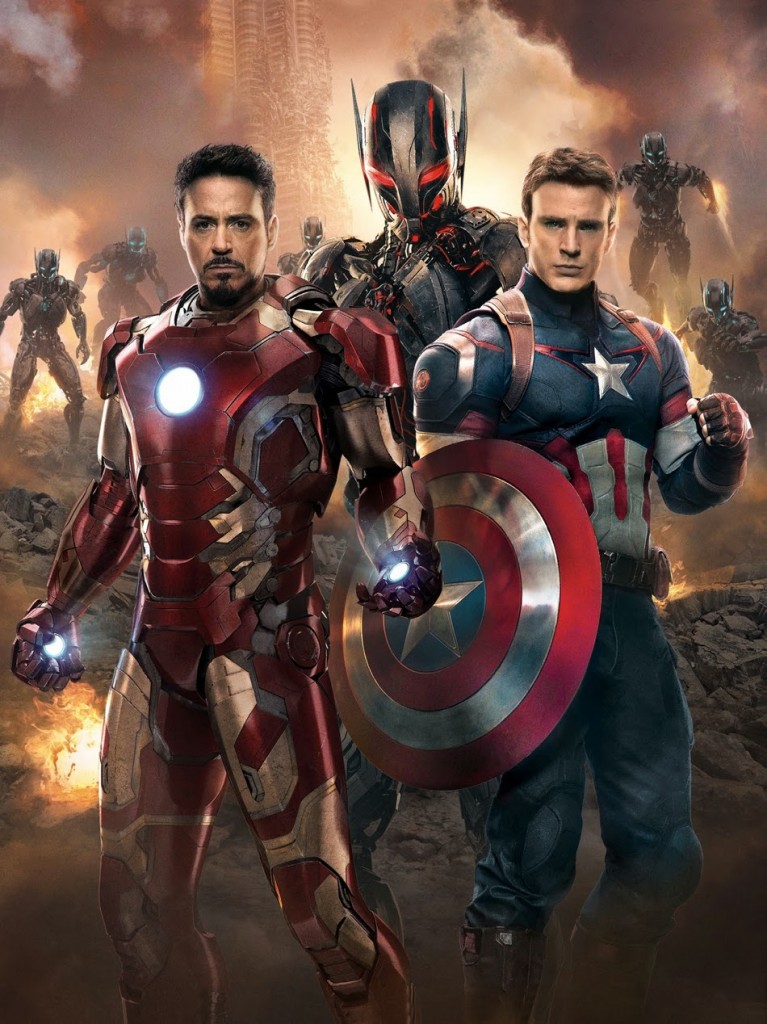 Just another episode of the MCU
Just another episode of the MCU
To answer the second question of the film’s ability to stand on its own, we must look at the role of Avengers: Age of Ultron in the Marvel Cinematic Universe. As part of a continuing saga, the film bears the burden of digging deeper in its current cast to strengthen our emotional attachment to these oft-emulated and honored heroes. The first film is on assembling a team, setting aside the differences. This film, the second one, is on recognizing that their individual differences and motives will prompt the team’s dissolution. The third one, the two-parter Avengers: Infinity War, which has the Russo brothers of Captain America: The Winter Soldier helming the movie events of 2018 and 2019, is still quite distant to surmise how or which aspect of team dynamics it tackles. On a larger scale, the film acts as the bridge to the next installments of the Marvel Cinematic Universe, Captain America: Civil War and Avengers: Infinity War. On a wider perspective and a longer time-frame, the studio must also address the inevitable expiration date of the actors portraying these heroes who have been alive in comic book form for decades, in our time. There is also a noticeable pattern of expanding the universe without falling to the convenient yet limiting potential of trilogies, reboots and formulas other superhero properties utilize. The Marvel Cinematic Universe series of films must therefore stand on their own, in parts, as individual films; conversely, each entry must enrich the whole universe as a whole.
A cog in the wheel
The next four paragraphs of this section contain in-depth reactions and suppositions with spoilers. Proceed with extreme caution.
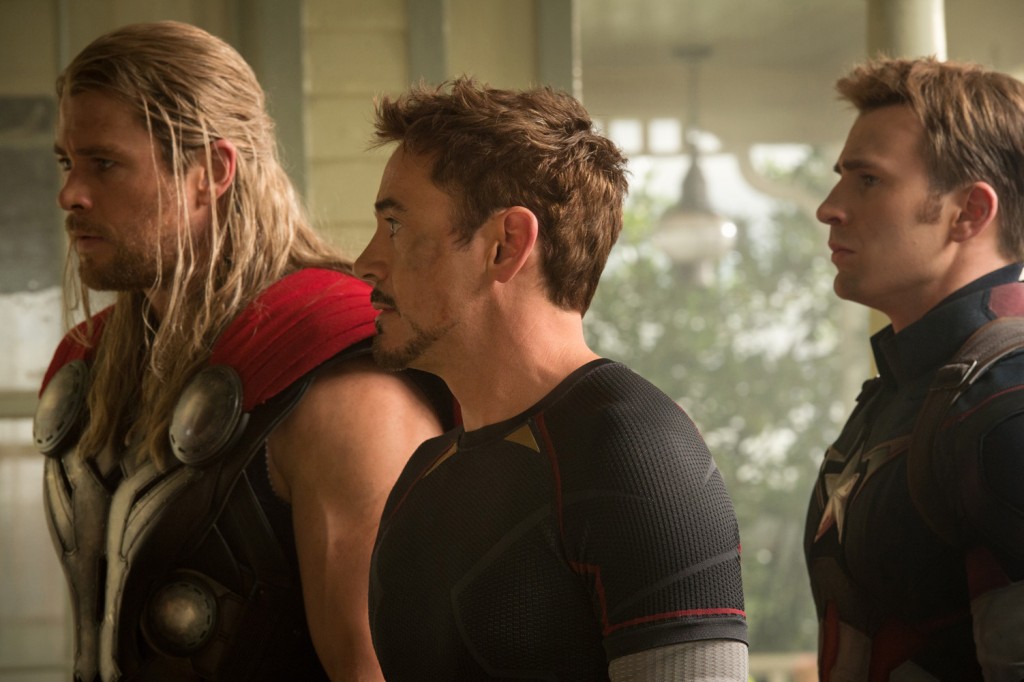 In exploring the characters, the Avengers: Age of Ultron is able to expound more of the superspies’, Black Widow and Hawkeye, past and aspirations in their personal lives as Natasha Romanoff and Clint Barton. They don’t have their own titular movies to star in and are consequently more malleable, and to an extent, expendable. Hawkeye’s impending retirement and possible death was gladly a red herring at the expense of another character, Pietro Maximoff, who along with Wanda Maximoff, could have examined the perspective of victims of poverty and individualism, the true reasons why peace cannot be attained. The good thing though is that with her different nationality, perspective and bearing one of the most heart-breaking backstories, her role and actions in the next films would feel more substantial. Black Widow’s relations with the Hulk and eventual breach of trust, in true black widow form, posits as a platform for the Hulk’s headlining film, Planet Hulk or World War: Hulk, if confirmed by Marvel as an addition for Phase Three or an early entry to Phase Four. For Black Widow, this blind obedience might take a toll on her and be the catalyst for her to turn, in her next outing in the third Captain America film.
In exploring the characters, the Avengers: Age of Ultron is able to expound more of the superspies’, Black Widow and Hawkeye, past and aspirations in their personal lives as Natasha Romanoff and Clint Barton. They don’t have their own titular movies to star in and are consequently more malleable, and to an extent, expendable. Hawkeye’s impending retirement and possible death was gladly a red herring at the expense of another character, Pietro Maximoff, who along with Wanda Maximoff, could have examined the perspective of victims of poverty and individualism, the true reasons why peace cannot be attained. The good thing though is that with her different nationality, perspective and bearing one of the most heart-breaking backstories, her role and actions in the next films would feel more substantial. Black Widow’s relations with the Hulk and eventual breach of trust, in true black widow form, posits as a platform for the Hulk’s headlining film, Planet Hulk or World War: Hulk, if confirmed by Marvel as an addition for Phase Three or an early entry to Phase Four. For Black Widow, this blind obedience might take a toll on her and be the catalyst for her to turn, in her next outing in the third Captain America film.
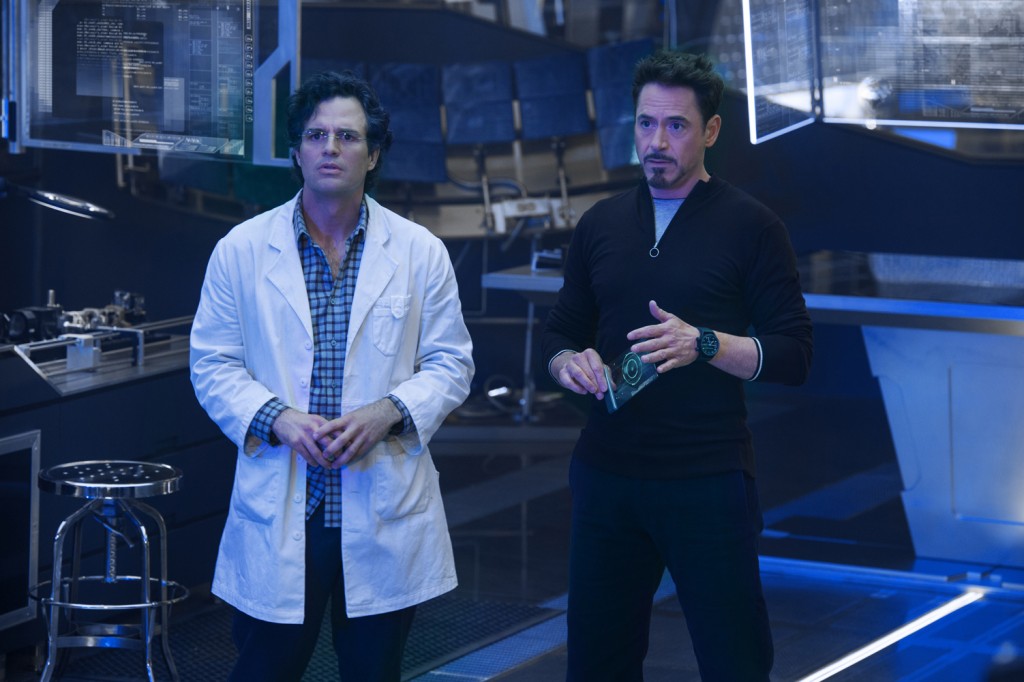 Stepping outside these more relatable human elements, the political arguments are formed through the more mythical superheroes, Captain America and Iron Man. As Cap is equipped with stringent military training and an unfading moral compass, his idealism and degree of selflessness clashes with the billionare-playboy-philantropist’s pragmatism and limitless desires to overcome the boundaries of mere mortals. They sometimes discuss these as an afterthought or while on a current situation that would surely spell the lives of populations. These word wars could have been more substantial if the film ended more catastrophically, or if pivotal events that affirmed Cap’s conservative stance backfired. Then again, such alternate ending would preempt the next series of films, while the complications will substantially prolong the film at the expense of the studio’s cash-grabbing need. These political debates nevertheless establish the role of the Avengers not just as a mere band of superheroes who will come where trouble is. Their responsibility extends as a global peacekeeping force, which one of them will presume covering primary prevention of these strifes. With the presence of different paramilitary organizations, as presented with SHIELD and HYDRA, all these are highly likely to be the foundation of Captain America: Civil War.
Stepping outside these more relatable human elements, the political arguments are formed through the more mythical superheroes, Captain America and Iron Man. As Cap is equipped with stringent military training and an unfading moral compass, his idealism and degree of selflessness clashes with the billionare-playboy-philantropist’s pragmatism and limitless desires to overcome the boundaries of mere mortals. They sometimes discuss these as an afterthought or while on a current situation that would surely spell the lives of populations. These word wars could have been more substantial if the film ended more catastrophically, or if pivotal events that affirmed Cap’s conservative stance backfired. Then again, such alternate ending would preempt the next series of films, while the complications will substantially prolong the film at the expense of the studio’s cash-grabbing need. These political debates nevertheless establish the role of the Avengers not just as a mere band of superheroes who will come where trouble is. Their responsibility extends as a global peacekeeping force, which one of them will presume covering primary prevention of these strifes. With the presence of different paramilitary organizations, as presented with SHIELD and HYDRA, all these are highly likely to be the foundation of Captain America: Civil War.
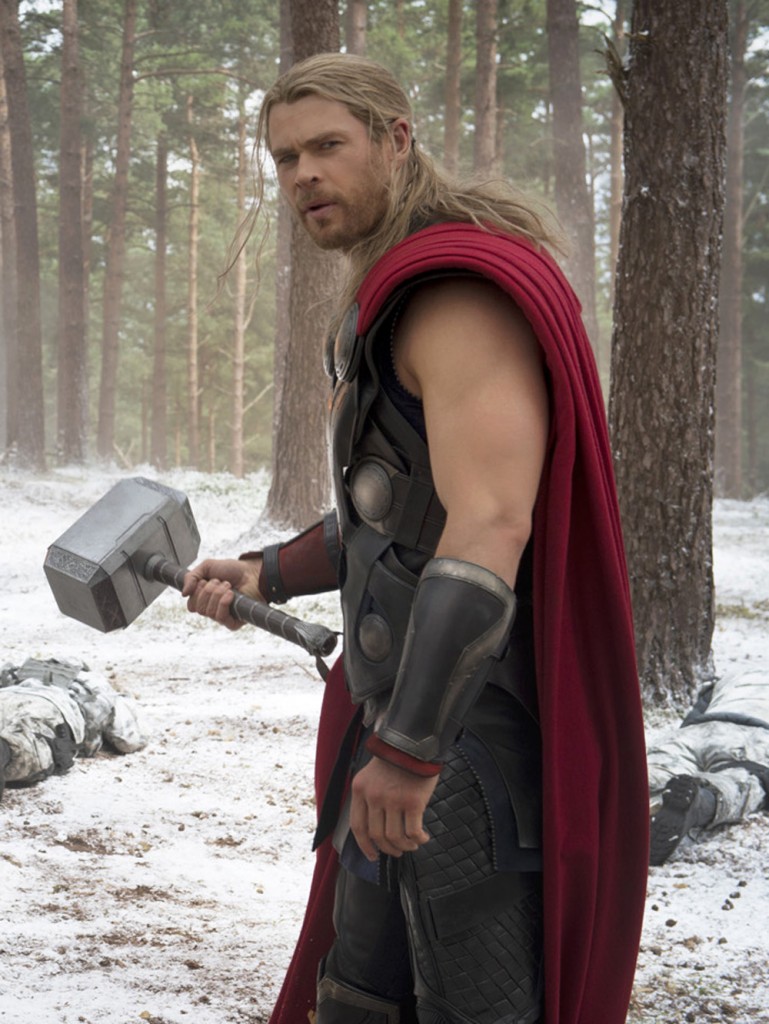 Taking a larger step, where the whole planet is at stake, Thor (together with the Guardians of the Galaxy as a backgrounder on the infinity stones) reminds the audience of the cosmic context to the citizens of Midgard/Earth. He mildly introduces the concept of determinism, with the construction and purpose of Vision in the movie, and more importantly in Avengers: Infinity War, where Thanos will stop at nothing to take all these infinity stones. His alien nature kept him from connecting outside the action sequences this time around. If you recall in The Avengers, his involvement is more central as his adopted brother Loki, the god of chaos, sowed discord among the Avengers and destroyed a large portion New York; while in the first Thor movie, his concern for his worthiness and the fate of his Earth-born beau, Jane Foster, allows us to connect with this Norse god. His role in Avengers: Age of Ultron seemed to only bring the plot further and place some entertainment with his Mjolnir, a hammer that can only be lifted by those who are worthy. If ever we are granted to the first cut of the film, as earlier mentioned, it is of my fervent desire that it concretely explains these fears are of not being able to garner the honour and respect of Odin, the All-Father. His dip in a mystic pool jived the least in this earthbound tale that it would benefit from a lot more storytelling. At its current states, Thor’s scenes serve as the jumping point for Thor: Ragnarok and his more pertinent involvement in Avengers: Infinity War or probable cameo appearance in Guardians of the Galaxy 2.
Taking a larger step, where the whole planet is at stake, Thor (together with the Guardians of the Galaxy as a backgrounder on the infinity stones) reminds the audience of the cosmic context to the citizens of Midgard/Earth. He mildly introduces the concept of determinism, with the construction and purpose of Vision in the movie, and more importantly in Avengers: Infinity War, where Thanos will stop at nothing to take all these infinity stones. His alien nature kept him from connecting outside the action sequences this time around. If you recall in The Avengers, his involvement is more central as his adopted brother Loki, the god of chaos, sowed discord among the Avengers and destroyed a large portion New York; while in the first Thor movie, his concern for his worthiness and the fate of his Earth-born beau, Jane Foster, allows us to connect with this Norse god. His role in Avengers: Age of Ultron seemed to only bring the plot further and place some entertainment with his Mjolnir, a hammer that can only be lifted by those who are worthy. If ever we are granted to the first cut of the film, as earlier mentioned, it is of my fervent desire that it concretely explains these fears are of not being able to garner the honour and respect of Odin, the All-Father. His dip in a mystic pool jived the least in this earthbound tale that it would benefit from a lot more storytelling. At its current states, Thor’s scenes serve as the jumping point for Thor: Ragnarok and his more pertinent involvement in Avengers: Infinity War or probable cameo appearance in Guardians of the Galaxy 2.
Vision’s origin of being a human creation powered with the yellow mind stone, raises up the stakes and fanfare for the war of Thanos against Earth. His creation not only activated the geek endorphins in us but is also the best section of the movie. How their opposing views with the sudden of interference that led to his birth, is a different take in the usual Avengers bull session which strained their kinship twice already. His enlightenment from seeing a reflection of himself and looking at the wide stillness of the world out there, are personally the most enthralling moments. That period of silence worked in proper contrast to what has been going on for the previous hours. His final conversation with Ultron is still a bit compressed, and by sealing the fate of Ultron, we are already bounded by what could have been an excellent superhero equivalent of unlimited potential. There are lingering questions posed, of how long this being with extreme potential be able to wield the Mjolnir, preventing him to go down Ultron’s road is quite pertinent. Again, just like the other storylines, it’s a good thing that he may be present in Captain America: Civil War since the Cap now officially leads the Avengers with Vision, a member of the second roster.
The following paragraphs are again spoiler-free. Proceed with unlimited freedom.
The four points above note that Avengers: Age of Ultron is a platform for the next stories of the Marvel Cinematic Universe as they head on to their endgame. Without this purpose, I think the film could have stood out more as character studies. The horrific scenes for the Avengers, the ones that meddle with their current state of stability, as shown in the first act through Scarlet Witch’s powers, are done by the book yet are actually the most refreshing bits of the movie. If the film went another way, they could have walked through this path, and thus marking Avengers: Age of Ultron the psychological film of the Marvel Cinematic Universe. It will seem too early to tear them apart and tumble them off their status quo though but this version will certainly throw off the audience from their calculated expectations. Working as a throwback to the Whedon-penned 2012 horror comedy Cabin in the Woods, the general reaction would probably be warmer or even match the first Avengers film. The Avengers worked because the bulk of the audience didn’t expect much since there is no team-based superhero film to be compared with. With last year’s impressive superhero team releases of X-Men: Days of Future Past and Guardians of the Galaxy, the Avengers sequel have much to rise against. Inwards, the Marvel Cinematic Universe hyped itself up in the last few months through enormous information, which naturally led to strong fan predictions. The Avengers‘ dearth of short-term goals kept it free to go wherever it wanted to be, save for killing its main heroes. The exact opposite happened to Avengers: Age of Ultron for it had to be the puppeteer and prop up the strings for the next films. It certainly placed this film on a higher pedestal on what it already is on. With the perception of falling from the top greater than rising to an unexpected pole, of noticing more of what’s missing than the bulk that is present, both the film’s appreciation and gross earnings will take a hit. Still, I am first and foremost a fan and not a movie market analyst. With the franchise’s popularity, I wish that they beat their own record of being the third highest-grossing film of all time, and give us more of this form of superhero goodness, which is now the only reason why I’m still burning money for the local IMAX cinemas.
Defining the Avengers
As a catalyst for the next films, the most positive thing that came across the film in terms of building the Marvel Cinematic Universe is examining the notion of Avengers as an organization. For a group of people to become an organization, it must have a collective purpose. For it to resist extinction, a framework must be in place to be able to utilize its members efficiently and effectively in their tasks and activities.
The next paragraph will truly spoil the movie experience so it would be best to avoid this part and get yourself in the nearest theatre to live it.
The group’s mission and vision are crystal clear though they need to have some assessment and goal-setting to characterize their principles and non-negotiable demands. The longevity of the organization will always be in jeopardy as long as death is a constant, which the actors are very much aware of. The film was able to do a work-around by adjusting the roster of its members without shaking things up with too much drama. As business is, this solution will maximize its capital more extensively than The Dark Knight trilogy, which heavily relied on its contracts with director Christopher Nolan and actor Christian Bale; while dodging the risks of rebootin,g as with Marvel Comics’ other properties, X-Men, Fantastic Four and Spider-man. With this development, the Marvel Cinematic Universe could go on forever and forever, or as long as capitalism continues to win our hearts.
In conclusion to this 4000-word article
With everything said, this layered spectacle is best served as a mini-series given Joss Whedon’s exemplary run of exploring multiple characters in both comic book (Astonishing X-Men, Runaways) and television formats (Buffy the Vampire Slayer, Angel, Firefly, Dollhouse). Nevertheless, the diehard fan in each of us must also recognize the herculean task of a ten-piece superhero movie. It means action taking precedence, or bearing the same level of attention as the story and character development. With these prerequisites, coupled by its dual role of holding the strings of the next films, I doubt anyone else, any studio could currently be able to do a decent movie of this caliber. Juggling these responsibilities, Joss Whedon truly deserves all the respect and admiration.
Available in 2D, 3D and IMAX 3D formats, Avengers: Age of Ultron is currently showing in almost every cinema nationwide. Photos provided by Marvel Philippines.
